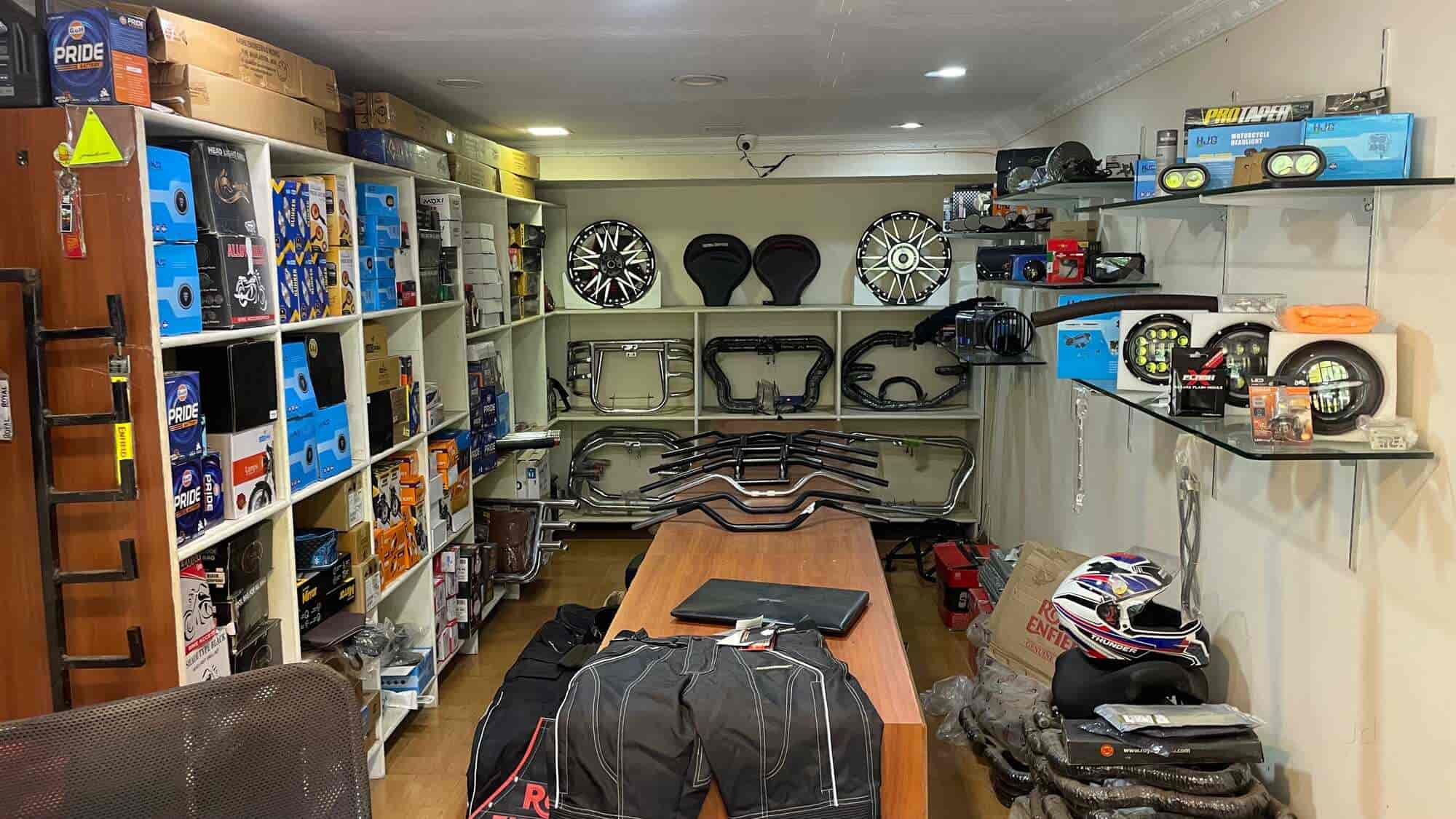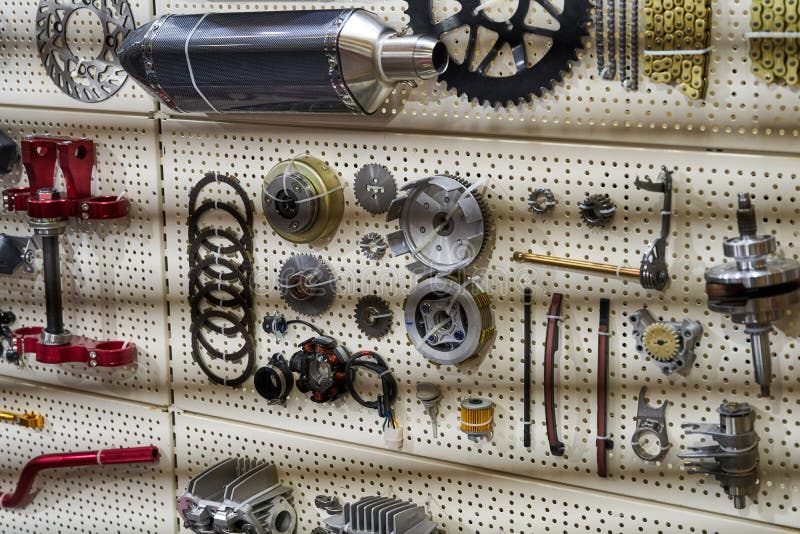Must-Have Motocross Gear: Elevate Your Riding Experience Today
Must-Have Motocross Gear: Elevate Your Riding Experience Today
Blog Article
Comprehending the Crucial Components of a Motorcycle: A Comprehensive Overview for Lovers
For bike enthusiasts looking to boost their riding experience and guarantee their bikes run efficiently, understanding the crucial elements of a bike is extremely important. Each component, from the engine's intricate functions to the vital function of the stopping devices, not only affects efficiency however likewise safety and security and comfort.
Engine Parts

The camshaft plays a crucial function in controlling the timing of the engine's valves, making sure the precise opening and closing essential for reliable gas and air consumption, in addition to exhaust expulsion. This timing is vital to keeping optimum engine performance and performance. Additionally, the carburetor or gas injection system, relying on the bike version, is responsible for mixing air with gas in the correct ratio for combustion.
The cooling system, either air or liquid-based, works to preserve the engine's temperature level within operational limitations, avoiding overheating and making sure long life - motorbike shop. Each element, carefully designed and incorporated, adds to the smooth procedure of the engine, specifying the motorcycle's power result and general performance
Transmission System
Essential to the motorbike's capability, the transmission system makes sure efficient power transfer from the engine to the wheels. This system makes up a number of crucial components, including the clutch, transmission, and last drive, each playing a crucial duty in converting the engine's power into activity. The clutch, normally operated by a hand lever, serves to disengage the engine and involve from the transmission, permitting smooth equipment modifications and controlled acceleration.
The transmission, commonly described as the transmission proper, contains a set of equipments that bikers can by hand move with to adjust the bike's rate and torque output. These equipments are arranged in a series that enables the motorcycle to accelerate efficiently and keep ideal engine performance throughout various speeds. A lot of motorbikes utilize a consecutive gearbox, requiring the cyclist to shift gears in a predetermined order.
Braking Devices
While understanding the transmission system is crucial to taking advantage of a motorbike's power, similarly important is the capability to manage and stop that power properly, which is where braking mechanisms enter into play. Brakes are vital for safety and performance, supplying the cyclist with the essential control to navigate numerous terrains and conditions. Usually, motorbikes include 2 kinds of braking systems: disc brakes and drum brakes.
Disc brakes are a lot more prevalent in modern-day motorbikes as a image source result of their remarkable performance. They contain a brake disc, caliper, and pads. When triggered, the caliper squeezes the brake pads against the spinning disc, converting kinetic power right into heat, consequently slowing down the wheel. This system uses better warm dissipation, regular performance, and enhanced quiting power, particularly in damp conditions.
On the other hand, drum brakes, though much less common, are still discovered in some motorcycles. They work by pressing brake footwear against the internal surface area of a drum affixed to the wheel. While generally much less reliable in warmth dissipation and quiting power, drum brakes are easier and a lot more cost-effective.
Recognizing these braking systems' nuances enables bikers to keep their motorcycles appropriately and appreciate the design that ensures secure and effective quiting.
Suspension and Guiding
Suspension and steering systems are important parts that significantly influence a bike's handling and ride convenience. The shock absorber, including forks at the front and shock absorbers at the rear, takes in road irregularities, boosting security and control. Front forks, upside down or typically telescopic, compress and rebound to minimize effects, while rear shock absorbers preserve tire contact with the roadway, critical for grip and safety and security.
Guiding, focused around the handlebars, attaches the biker to the motorcycle's directional control. The steering head bearings guarantee smooth operation, allowing specific ability to move. Appropriate placement and upkeep of these bearings are essential for foreseeable steering response and reducing cyclist fatigue.
The suspension's adjustability is another essential element; preload, damping, and rebound settings permit modification to fit different riding problems and styles. This versatility is important for enhancing performance, whether browsing metropolitan roads or dealing with sturdy routes. Developments like electronic suspension systems use real-time modifications, improving adventure high quality across diverse terrains.

Electric Equipments
After making certain a smooth and controlled trip through efficient suspension and steering systems, focus turns to the electrical systems, an essential element of modern bikes. These systems play a critical duty not just my company in beginning the engine but likewise in powering different components that enhance the functionality and safety of the bike.
At the heart of a motorcycle's electric system is the battery, which stores electrical power essential for starting the engine and powering supporting systems - motorcycle shop. The alternator or generator, paired with the rectifier-regulator, makes certain the battery stays billed while the motorbike functions, transforming power right into electric power and maintaining voltage degrees
The ignition system, one more crucial part, is in charge of igniting the air-fuel combination in the engine's cyndrical tubes. Modern bikes frequently utilize a digital ignition system, supplying better performance and dependability compared to traditional systems.
Illumination systems, including fronts lights, tail lights, and signs, are additionally vital, ensuring exposure and security for the rider. Additional digital parts such as sensors, control systems, and shows add to advanced attributes like gas injection management, anti-lock braking systems (ABS), and digital dashboards, further improving the riding experience.
Verdict
An extensive understanding of a motorcycle's important parts, news including the engine, transmission system, braking mechanisms, suspension, steering, and electrical systems, is indispensable for enthusiasts intending to optimize security, comfort, and performance. Mastery of these elements permits educated decisions pertaining to upkeep and upgrades, inevitably improving the riding experience. By integrating this knowledge, motorcyclists can ensure their motorbikes operate at peak performance and integrity, consequently taking full advantage of both enjoyment and long life of their lorries.
For motorcycle lovers looking to elevate their riding experience and ensure their bikes run efficiently, understanding the essential elements of a motorbike is paramount.Indispensable to the motorbike's performance, the transmission system makes certain reliable power transfer from the engine to the wheels.While recognizing the transmission system is essential to using a motorbike's power, just as essential is the capability to regulate and quit that power effectively, which is where braking devices come right into play. Typically, motorcycles feature two kinds of braking systems: disc brakes and drum brakes.
A complete understanding of a bike's necessary elements, consisting of the engine, transmission system, stopping devices, suspension, steering, and electric systems, is essential for lovers aiming to optimize performance, safety, and convenience.
Report this page